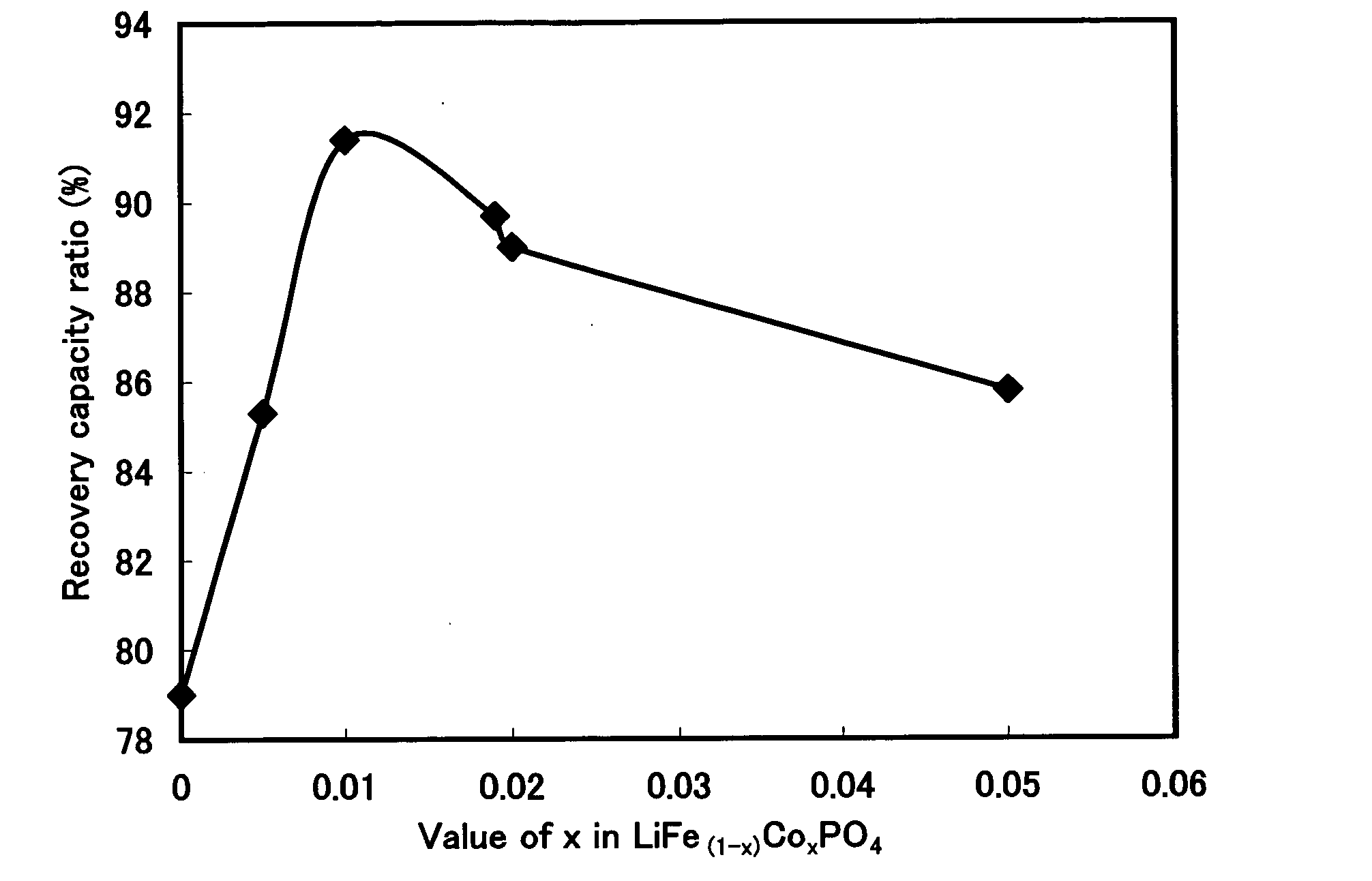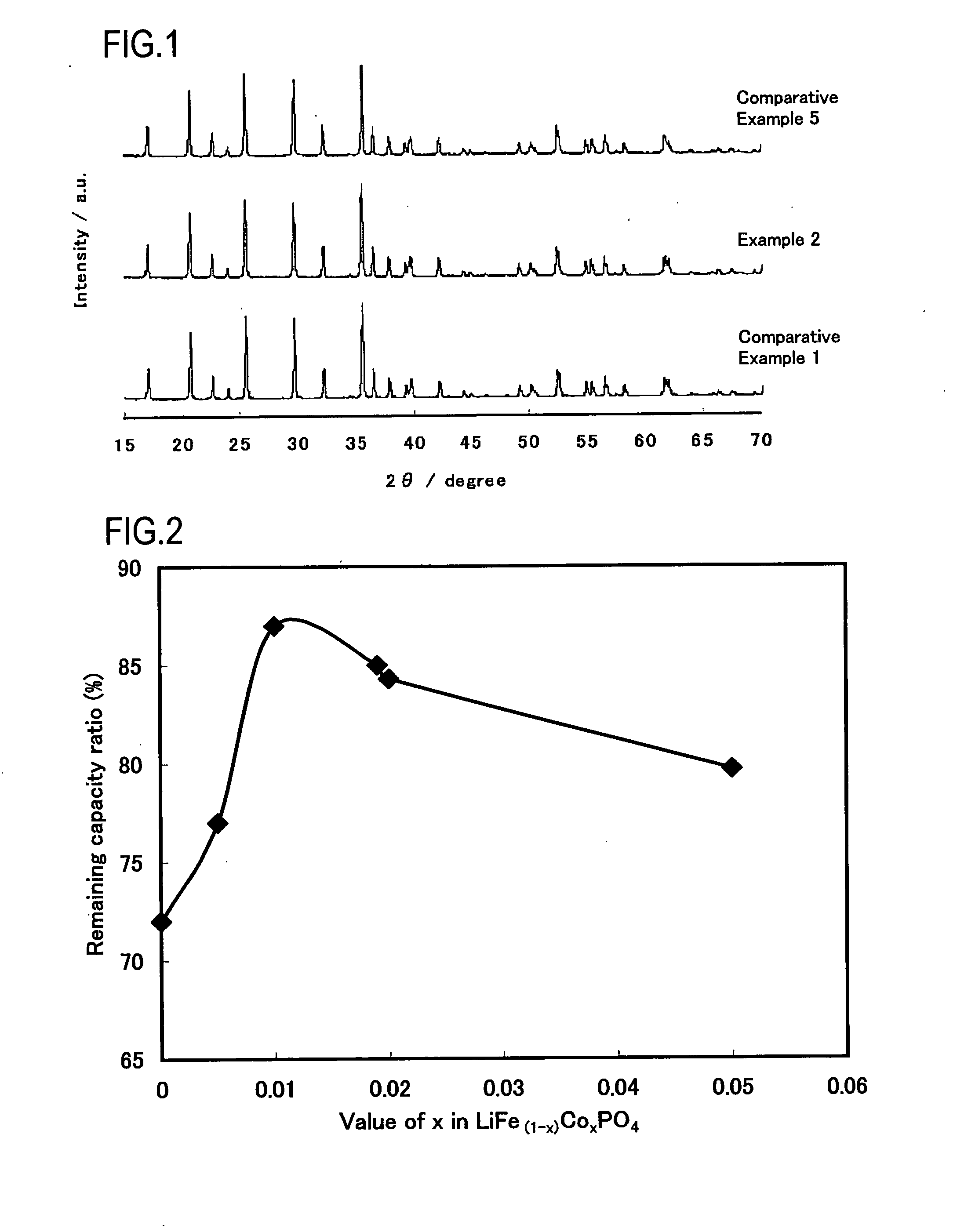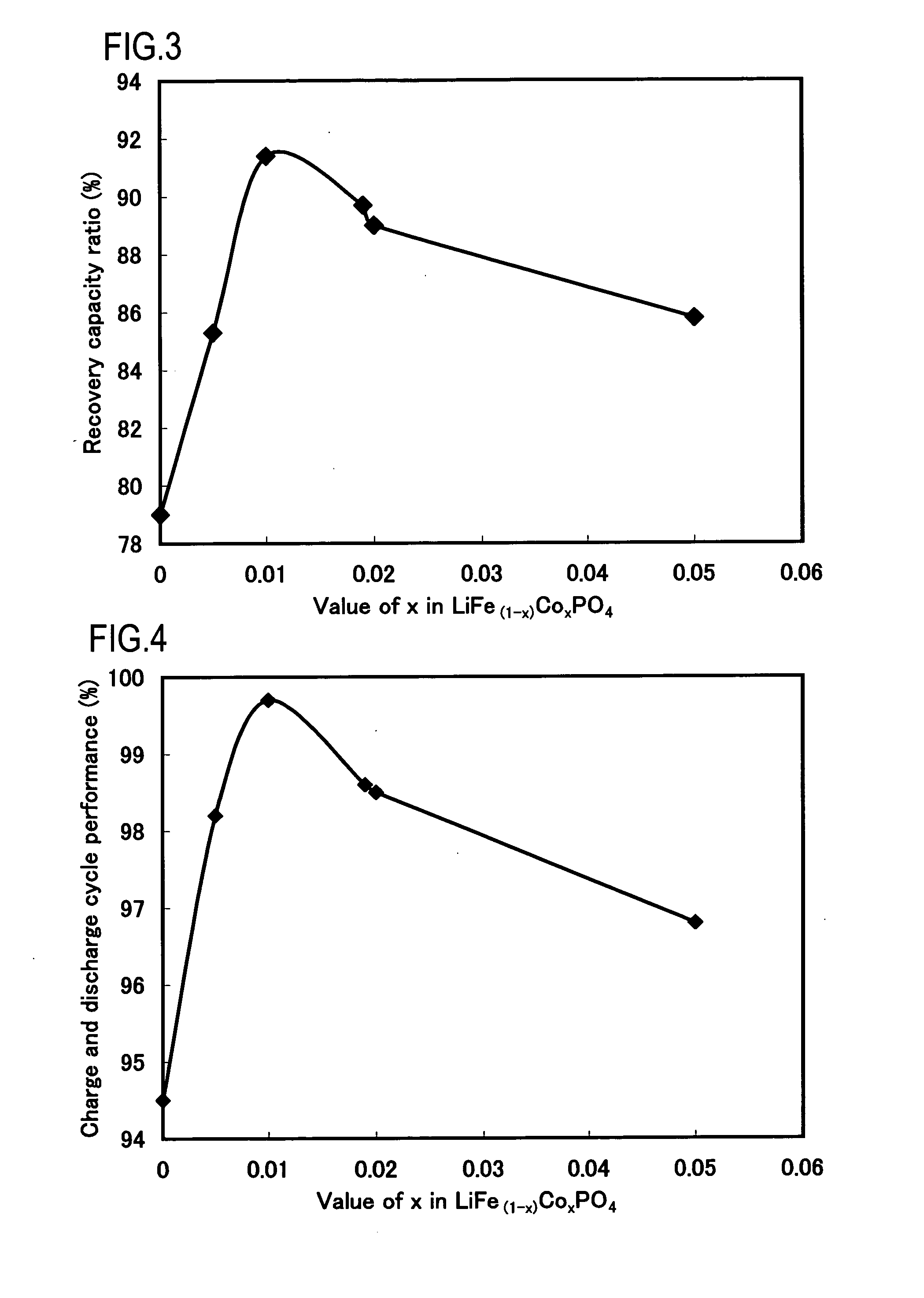Positive active material for lithium secondary battery and lithium secondary battery
- Summary
- Abstract
- Description
- Claims
- Application Information
AI Technical Summary
Benefits of technology
Problems solved by technology
Method used
Image
Examples
example 1
Synthesis of LiFe0.995Co0.005PO4
[0052]Iron oxalate dihydrate (FeC2O4.2H2O), cobalt acetate tetrahydrate (Co(CH3COO)2.4H2O), ammonium dihydrogen phosphate (NH4H2PO4), and lithium carbonate (Li2Co3) were weighed at a molar ratio of 0.995:0.005:1:0.51. Ethanol was added thereto to obtain a paste-like mixture and the mixing was carried out in a wet manner for 2 hours by using a ball mill (a planetary mill manufactured by Fritsch GmbH, ball size of 1 cm).
[0053]The mixture was put in a crucible made of alumina (external dimension 90×90×50 mm) and calcined in nitrogen gas circulation condition (flow rate of 1.0 l / min) by using an gas convertible calcining furnace (Gas Convertible High-accuracy Vacuum Furnace KDF-75, manufactured by Denken Co., Ltd). The calcining temperature was 700° C. and the calcining time (time for keeping calcining temperature) was 2 hours. The temperature increasing speed was 5° C. / min and the temperature decrease was carried out by spontaneous cooling. The obtained...
example 2
Synthesis of LiFe0.99Co0.01PO4
[0054]In production of the positive active material, a positive active material for a lithium secondary battery was produced in the same manner as in Example 1, except that iron oxalate dihydrate (FeC2O4.2H2O), cobalt acetate tetrahydrate (Co(CH3COO)2.4H2O), ammonium dihydrogen phosphate (NH4H2PO4), and lithium carbonate (Li2Co3) were weighed at a molar ratio of 0.99:0.01:1:0.51. A composition of LiFe0.99Co0.01PO4 was confirmed by ICP emission spectroscopy.
example 3
Synthesis of LiFe0.985Co0.015PO4
[0055]In production of the positive active material, a positive active material for a lithium secondary battery was produced in the same manner as in Example 1, except that iron oxalate dihydrate (FeC2O4.2H2O), cobalt acetate tetrahydrate (Co(CH3COO)2.4H2O), ammonium dihydrogen phosphate (NH4H2PO4), and lithium carbonate (Li2Co3) were weighed at a molar ratio of 0.985:0.015:1:0.51. A composition of LiFe0.985Co0.015PO4 was confirmed by ICP emission spectroscopy.
PUM
 Login to View More
Login to View More Abstract
Description
Claims
Application Information
 Login to View More
Login to View More - R&D
- Intellectual Property
- Life Sciences
- Materials
- Tech Scout
- Unparalleled Data Quality
- Higher Quality Content
- 60% Fewer Hallucinations
Browse by: Latest US Patents, China's latest patents, Technical Efficacy Thesaurus, Application Domain, Technology Topic, Popular Technical Reports.
© 2025 PatSnap. All rights reserved.Legal|Privacy policy|Modern Slavery Act Transparency Statement|Sitemap|About US| Contact US: help@patsnap.com



